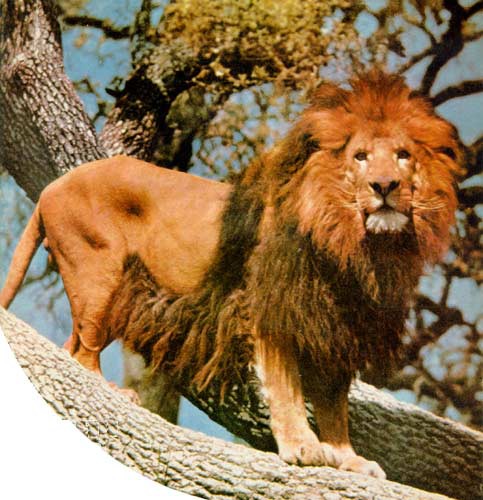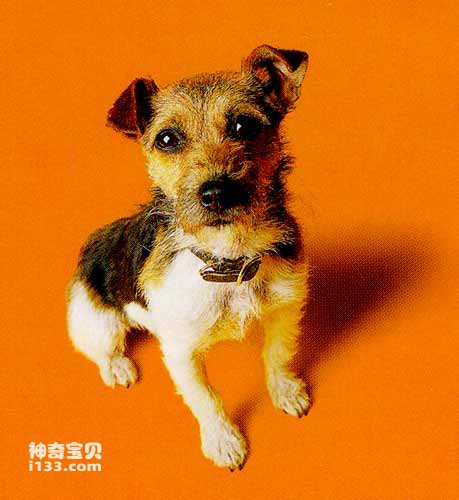All different kinds of living things on earth have more or less common characteristics, and the usual explanation for this phenomenon is that they all descend from a common ancestor. For example, all mammals have hair because sheep, lions, dolphins, humans, and bats all evolved from a hairy species. Because when this common ancestor emerged, hair had already become an important feature of it. For another example, the sheep, lions and other animals mentioned above all use their lungs to breathe in the air instead of using their gills to breathe in the water; similarly, pigeons, eagles, cobras, vipers, etc. also use their lungs to breathe in the air. Therefore, all these All animals must have evolved from an ancestor who used lungs to breathe air. At the same time, since the number of animals with lungs far exceeds the number of animals with hair, and all animals with hair have lungs, we can conclude that the animal with lungs is better than the first animal with hair. Animals appeared earlier and are the more ancient ancestors of the animals mentioned above; one of its descendants many generations later became the common ancestor of birds such as pigeons and eagles, and another descendant several generations later became the common ancestor of birds such as pigeons and eagles. It became the common ancestor of snakes such as cobras and vipers, and an unknown descendant many generations later became the common ancestor of mammals such as sheep, lions, dolphins, humans, and bats.

lion
According to this reasoning method, we can find that all creatures on the earth can be classified into some common ancestors; these ancestral creatures can be traced back to some more ancient ancestors; finally, the earliest ancestor of all creatures They can all be attributed to a creature that lived in the very, very distant past. Use a line drawing to describe such a process, just like a big tree whose base originates from a trunk and branches more and more upwards (of course, some middle branches cannot continue to develop upwards). We call it a biological system tree. (Also called an evolutionary tree).

dog
Each of us can feel that the relationship between various living creatures is close or far. For example, they are both animals, and monkeys are more similar to humans than dogs; and they are both primates, and chimpanzees are more similar to humans than monkeys (as evidenced by the fact that chimpanzees have no tails and monkeys have tails). It was on the basis of this understanding that Linnaeus, a Swedish scientist in the 18th century, pioneered a biological classification system. According to the differences in the similarity of morphological structures between different organisms, organisms were divided into categories from high to low. Series classification levels. After continuous improvement and development by later generations, this classification system is now basically divided into several levels from high to low: boundary, phylum, class, order, family, genus, and species.
A poodle, a poodle, a Scottish shepherd dog, and a German black-backed wolfdog. Their appearance looks very different from each other, but we know that they all belong to the same animal in a sense. This is because they have very similar biological tissues, especially the same genetic material - genes. Recalling the metaphor of the "life factory", we can vividly say that the information recorded on the "tape" in the "central control system" of the same species must embody the same "design idea."
To define species in scientific language, species (that is, "species") is the most basic unit of biological classification. It refers to a species that has certain morphological and physiological common characteristics, a common gene pool, and is distributed in a certain geographical area. Range, a collection of those organisms occupying the same ecological niche. Individuals of the same species can mate randomly and produce fertile offspring; individuals of one species generally do not mate with individuals of other species, or cannot produce fertile offspring after mating. The name of a species is named according to the binomial method founded by Linnaeus, that is, each organism is given a Latin name, expressed by two words indicating the species: the first word is the genus name, and the last word is Species name.

rabbit
Even among distantly related species, such as bats and whales, the similarities in "design ideas" often greatly outweigh the differences in their appearance. Bats and whales are both mammals that evolved from a not-too-distant common ancestor, and most of the "design ideas" on which they formed and survived are the same. For example, the organizational structure of the respiratory, digestive and excretory systems, the distribution of the nervous and blood circulation systems, the methods of building skin and bones, the way of maintaining a constant body temperature and the types of protein molecules that make up the body, etc., all these and many others There are more similarities than differences between bats and whales. Therefore, the two animals can in a sense be considered the same animal with different appearances, although this time it will take some more in-depth research to be sure. As for carps and rabbits, more in-depth research is needed to see how they are similar. Likewise, carp and rabbits have more similarities than differences.
According to the similarities and differences shown by this "design idea" and morphological characteristics at different depths of research, we can divide living things into one-level hierarchies: for example, many species make up a genus, many genera make up a family, and many families make up a family. Orders are composed of many orders, classes are composed of many classes, and phylums are composed of many classes. Finally, kingdoms are composed of many phyla. Some slightly higher (super) and slightly lower (sub, sub) levels can also be inserted between the above basic classification levels, such as slightly higher superfamilies, slightly lower subfamilies and subfamilies, etc. From this we have discovered that the diversity of life on earth is not a mess, but that the similarities and differences of various creatures are expressed in an orderly manner at different levels.

roses
So, how about comparing bats and roses? There are undoubtedly some differences in the higher-level "design thinking" between these two creatures. Roses don't have anything like a bat's membrane wings, no bones, no heart, no ability to emit ultrasonic waves and use it to identify obstacles, etc. There is no doubt that the difference between bats and roses is already a higher level difference in the existing life world. We define this level as a boundary. The high-level biological classification system now widely accepted by scientists is the five-kingdom system, which divides all living things into the kingdoms Prokaryotes, Protists, Fungi, Plants and Animals.
animal tags:
We created this article in conjunction with AI technology, then made sure it was fact-checked and edited by a Animals Top editor.